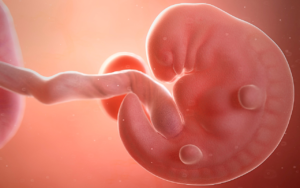Sex determination and gonadal development are pivotal biological processes that govern the formation of distinct male and female reproductive systems in organisms. These intricately woven mechanisms are orchestrated by a delicate interplay of genetic, hormonal, and environmental factors, resulting in a fascinating journey from a single fertilized cell to fully developed sexual characteristics. Understanding the nuances of sex determination and gonadal development not only unveils the mysteries of reproduction but also offers insights into the broader realms of genetics, evolution, and even environmental influences.
In the realm of biology, sex determination encompasses a range of mechanisms, from the genetic blueprint encoded within an organism’s DNA to external factors that shape its development. The intricate dance between sex chromosomes, hormonal cues, and environmental triggers culminates in the establishment of an individual’s sex, further influencing the differentiation of gonads into ovaries or testes. As we delve into the remarkable intricacies of these processes, we embark on a journey that unravels the biological tapestry of life itself, shedding light on the complex web of existence and adaptation.
Table of Contents
Genetic Basis of Sex Determination
At the heart of the captivating journey of sex determination and gonadal development lies the intricate web of genetics. This process is driven by a multitude of genes that orchestrate the formation of male and female reproductive systems. In species spanning from humans to birds and beyond, the genetic basis of sex determination showcases remarkable diversity. In mammals, the familiar XX and XY chromosome system defines sexes, with XX indicating females and XY indicating males. A prime example is the SRY gene residing on the Y chromosome, which acts as the “master switch” for male development. When this gene is activated, it initiates a cascade of events leading to the development of testes and the subsequent production of testosterone. In contrast, species like birds employ a unique ZW and ZZ system, where females carry ZW chromosomes and males possess ZZ. This genetic dance exemplifies the pivotal role genetics plays in driving the intricate choreography of sex determination and gonadal development.
The genetic underpinnings of sex determination and gonadal development unveil awe-inspiring examples across the biological spectrum. Take humans, for instance; the presence of the SRY gene on the Y chromosome marks a crucial milestone in male development. This gene’s activation paves the way for the emergence of testes, instigating the production of testosterone that guides the development of male reproductive structures. Beyond humans, a stroll into the world of reptiles reveals species like the red-eared slider turtle, where temperature-dependent sex determination (TSD) takes the spotlight. Here, the incubation temperature of eggs influences the eventual sex of hatchlings, showcasing nature’s intricate blend of genetics and environmental cues. This journey through the genetic landscape of sex determination illuminates the complexity underlying gonadal development and offers a window into the awe-inspiring genetic tapestry shaping the diversity of life.
Gonadal Development
Gonadal development stands as a pivotal chapter in the intricate story of sex determination and reproductive system formation. This process orchestrates the transformation of undifferentiated tissues into ovaries or testes, guided by a symphony of genetic cues, hormonal signals, and environmental influences. One prime example lies within the realm of humans: the SRY gene found on the Y chromosome serves as a master conductor, initiating the male development pathway by spurring the formation of testes. Contrarily, the absence of this gene allows ovaries to form, ushering in the female reproductive trajectory. This genetic dance underscores the foundational role of gonadal development in shaping an individual’s sex.
Zooming beyond humans, the astonishing diversity of gonadal development mechanisms unfolds. In certain reptiles, such as the temperature-sensitive loggerhead sea turtles, environmental factors like temperature determine the fate of developing gonads, exemplifying a temperature-dependent sex determination system. This captivating interplay of biology and environment illustrates how intricately gonadal development is woven into the fabric of life’s diversity. By unraveling the mysteries of gonadal development, we unlock insights into the fundamental forces driving the complexity of sex determination, ultimately enriching our understanding of the ever-evolving tapestry of life.
Hormonal Influence
Hormones serve as pivotal orchestrators in the intricate dance of sex determination and gonadal development. In this complex process, testosterone and anti-Müllerian hormone (AMH) stand as key players in male development, actively sculpting the male reproductive system while repressing female structures. For instance, the presence of the SRY gene on the Y chromosome triggers the release of testosterone, leading to the formation of testes and the development of male secondary sexual characteristics. Conversely, estrogen and progesterone play a crucial role in female development, fostering the growth of ovaries, fallopian tubes, and the uterus. These hormones influence the unfolding of primary and secondary sexual characteristics, from the growth of genitalia to the onset of menstruation, underlining their fundamental role in defining an individual’s biological sex.
A tangible example of hormonal influence in sex determination and gonadal development is observed in individuals with Androgen Insensitivity Syndrome (AIS). Despite having XY chromosomes, these individuals have a genetic mutation that prevents cells from properly responding to testosterone. As a result, the male reproductive structures fail to develop, and individuals with AIS typically present with female external genitalia. This phenomenon showcases the intricate balance of hormonal signaling in shaping the trajectory of an individual’s sexual development, highlighting the complex interplay between genetics, hormones, and the intricate process of sex determination and gonadal development.
Environmental Factors
Environmental factors wield a significant influence on the captivating realm of sex determination and gonadal development. In certain species, such as reptiles like turtles, the temperature at which eggs are incubated can dictate an individual’s sex. This phenomenon, known as temperature-dependent sex determination (TSD), showcases how external conditions can shape biological outcomes. For instance, warmer incubation temperatures might lead to the emergence of females, while cooler temperatures could result in males. This intricate dance between environmental cues and biological processes underscores the delicate balance of nature’s design, where even a slight shift in temperature can sway the fate of an entire population’s gender distribution.
The captivating connection between environmental factors and sex determination isn’t limited to reptiles alone. In some fish species, such as the clownfish, social dynamics within a group can trigger a change in sex. For instance, when the dominant female of a clownfish group dies, the largest male undergoes a transformation into a female. This adaptation, known as sequential hermaphroditism, exemplifies the intricate mechanisms through which organisms adjust their reproductive strategies to optimize survival and reproduction in varying ecological contexts. As researchers delve deeper into these fascinating interplays between environment and biology, a richer understanding of sex determination and gonadal development emerges, shedding light on the remarkable adaptability and complexity of life on our planet.
Intersex and Disorders of Sex Development
Intersex and Disorders of Sex Development (DSD) represent intricate facets of the broader field of sex determination and gonadal development. Intersex individuals are those who possess atypical variations in their sexual characteristics, challenging traditional male-female definitions. DSD refers to a range of congenital conditions affecting the development of reproductive or sexual anatomy. These conditions underscore the complexity of sex determination, where genetic, hormonal, and environmental factors interact in intricate ways to shape an individual’s biological sex. The study of intersex and DSD exemplifies the delicate balance between genetics and physiology in guiding the formation of gonads and reproductive structures.
Ambiguous Genitalia and Congenital Adrenal Hyperplasia
One prominent example of intersex and DSD is the occurrence of ambiguous genitalia. In cases like Congenital Adrenal Hyperplasia (CAH), an enzyme deficiency leads to excessive production of androgens (male hormones) during fetal development. This can result in the masculinization of female genitalia or the development of ambiguous genitalia. The condition highlights the intricate role of hormones in sex determination and gonadal development. These cases emphasize the need to consider not only genetics but also hormonal influences when understanding the complexities of intersex variations.
The Multifaceted Nature of Biological Sex
The existence of intersex and DSD challenges the conventional binary view of biological sex, showcasing the intricate mosaic of possibilities in the realm of sex determination and gonadal development. These conditions highlight the interplay between genetic factors, hormonal influences, and the delicate balance required for the development of male and female reproductive structures. The study of intersex and DSD reinforces the idea that biological sex is a multifaceted continuum rather than a rigid dichotomy. This perspective is essential for a comprehensive understanding of the intricate processes that shape an individual’s reproductive identity.
Evolutionary Significance
Sex determination and gonadal development are not only vital processes for individual reproductive success but also hold profound evolutionary significance. Across species, the diverse mechanisms of sex determination have evolved in response to ecological and reproductive demands, highlighting the remarkable adaptability of life. One illustrative example is sequential hermaphroditism, observed in certain fish species. This phenomenon allows individuals to change their sex during their lifetime, adapting to fluctuating population dynamics and optimizing reproductive opportunities. Such flexibility in sex determination mechanisms underscores the role of evolution in shaping reproductive strategies.
Furthermore, the evolutionary implications of gonadal development are evident in the case of sexual dimorphism. In many species, males and females exhibit distinct traits beyond reproductive organs, such as coloration and size. These differences often arise due to differential gonadal hormone production. For instance, in birds, where males and females often have differing plumage, the variations in hormone secretion from developing gonads lead to the observed differences in appearance. This sexual dimorphism serves various evolutionary purposes, from attracting mates to minimizing competition within the same sex, ultimately enhancing the species’ chances of survival and reproduction.
In conclusion, the intricate processes of sex determination and gonadal development go beyond individual reproduction, offering profound insights into evolutionary dynamics. From the remarkable adaptability of sequential hermaphroditism to the creation of sexual dimorphism through gonadal hormone secretion, these mechanisms reflect the multifaceted ways in which organisms have evolved to thrive in diverse environments. The study of sex determination and gonadal development not only deepens our understanding of biology but also illuminates the complex interplay between genetics, hormones, and natural selection that have shaped life on Earth.




